Are you interested in starting an avocado farming business but need help knowing where to begin? Crafting a comprehensive business plan is a critical first step to success. From selecting the right seeds and location to managing the day-to-day operations and developing a marketing strategy, there are many factors to consider. In this blog post, we’ll provide a step-by-step guide to help you craft a comprehensive avocado farming business plan. You’ll have the knowledge and tools to make your avocado farming dream a successful reality.
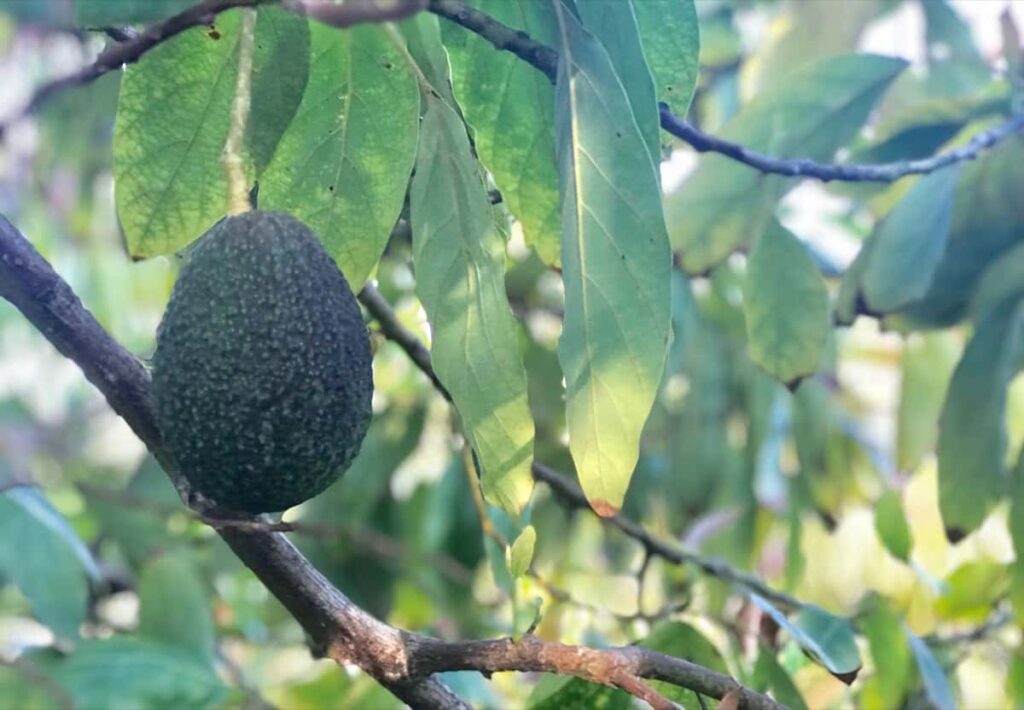
Avocado Farming Business Plan
What is Avocado Farming?
Avocado farming involves growing and harvesting avocados for their fruit, which is high in healthy oils used in cooking. The seeds are used for medicinal purposes, such as reducing high blood pressure, and the flowers can be used in beauty products like soaps and perfumes.
Origin and History of Avocado Farming
Benefits of AvocadAvocados originated in Central and South America and have been grown in other tropical regions for centuries. In the 20th century, avocado farming became a significant part of agribusiness in California, leading to the multimillion-dollar industry we see today. Avocado farming has expanded to other countries, including Mexico, Brazil, Israel, and New Zealand.
Benefits of Avocado Farming
- Avocado fruit is highly nutritious and has several health benefits, such as promoting heart health, improving digestion, and aiding in weight loss.
- Avocado trees are adaptable to various climates and soil types, making growing them easy in different regions.
- Additionally, avocado farming can be done on a small scale, making it accessible to small farmers and homesteads.
- Avocado trees also require minimal care and maintenance, making them easy for new and experienced farmers to manage.
Popular Avocado Varieties
There are approximately 300+ varieties, with the Hass variety being the most popular, accounting for over 50% of avocado production worldwide. However, other common varieties like the Fuertes and Bacon avocados exist. The Hass avocado was first discovered in the 1920s and takes five to seven years to mature. The Fuertes avocado is the second most popular variety, with pear-shaped fruit and smooth medium-thin skin. The Bacon avocado, originating from the same region as Hass, has a bumpy skin covering the fruit from stem to tip and grows around 25-30 feet tall with hard flesh.
In case you missed it: How to Fertilize Avocado Trees For Insane Fruit Set: Schedule for Natural, Organic, and Chemical Application
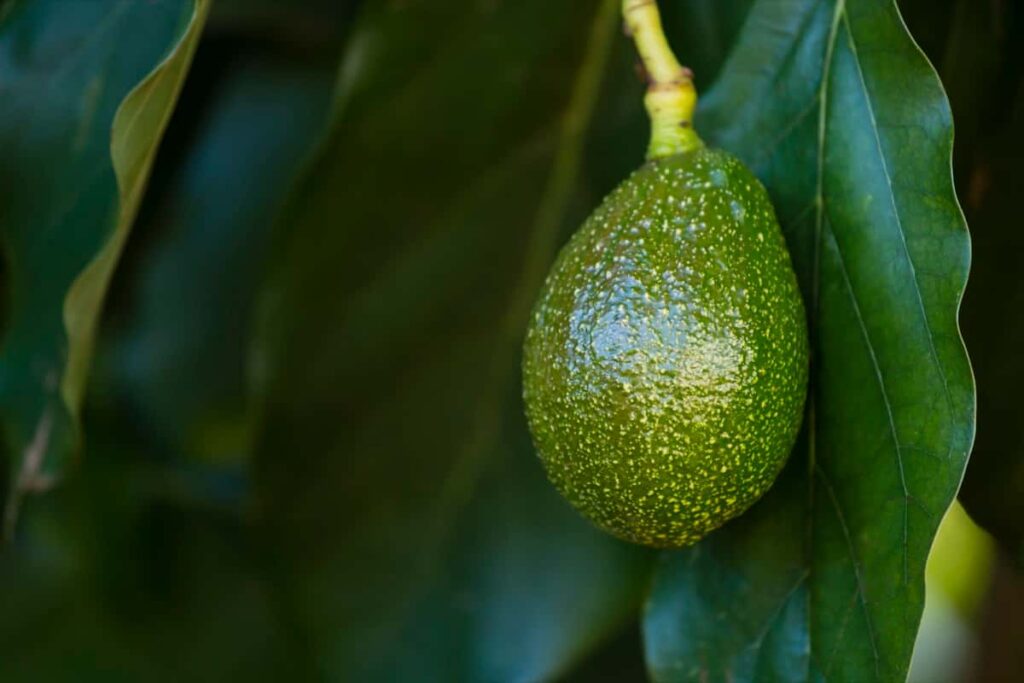
How to Commercially Grow Avocado and Production
- Commercial avocado farming requires careful planning and execution. The first step is to obtain grafted and hardened seedlings, readily available in local garden stores or online. The Hass and Fuerte avocado varieties are the most popular seedlings for commercial cultivation.
- Avocado trees require direct sunlight per day for optimal growth and fruit production. The ideal soil for avocado cultivation is well-drained and uncompact. The planting hole should be approximately 2 feet by 2 feet by 2 feet deep, and the soil should be loosened to accommodate future root expansion. A slope or mound should be created for better drainage if the soil is clay-like.
- The seedling’s root ball must remain intact during planting, and any woody roots should be clipped to prevent tangling. The planting hole should be backfilled with soil, and fertilizer pellets may be added before watering the seedling thoroughly.
- To maintain moisture levels and promote healthy growth, a 6-inch layer of coarse wood mulch should be spread around the tree, leaving a 2-foot clearance on all sides. Regular watering is crucial, with a frequency of three to four times per week, depending on the weather.
- In terms of production, an average avocado tree can produce up to 200 fruits annually, with peak production occurring between 5-7 years after planting. However, yield may vary based on weather conditions, irrigation, and soil quality.
- Regular fertilization is required to ensure the best yield, with nitrogen, zinc, and calcium essential nutrients for avocado growth. Pruning is also necessary to promote branching and manage the tree’s height.
Best Conditions Required for Avocado Farming
- Long-term Investment: Avocado farming is a long-term investment that requires high initial costs, followed by a 3-5 year wait for the trees to mature.
- Climatic Requirement: Climate and variety are closely linked. The West Indian cultivars originated in the humid tropical lowlands of Central America, while the Mexican races are more frost tolerant and also these grow at lower temperatures and humidity. The Guatemalan cultivars are sensitive to high temperatures and low humidity. The Fuerte cultivar is a natural hybrid that has a wider climatic tolerance.
Temperature Requirement: Cool temperatures (mean daily 20-24C) are best, as hot, dry weather causes fruit drop. Humidity should be above 50% at midday, especially during pollination, flowering, and fruit set. Avocado trees do not tolerate wind, as their brittle branches can snap off easily. Rain-fed avocados require >1000 mm of rainfall a year, spread out throughout the year, with a two-month drier season pre-flowering. Most avocados need to be irrigated, with plants requiring about 25 mm of water per week. Farmers should ensure they have access to enough water year-round, as droughted avocado trees die quickly.
- Water Requirement: Avocado trees have a root system that can penetrate the soil to 1 m, with most feeder roots in the top 20 cm of soil in the drip zone. The roots are fragile, and root rot (Phytophthora) can develop quickly when roots are damaged or waterlogged.
- Pit Size: Soil profile pits must be dug at least 1.5m deep, and at least one pit per ha. Soil samples should be analyzed for chemical and textural properties, with both the topsoil and subsoil tested.
- Soil Requirement: Avocados can grow in soil pH values ranging from 5 to 7 with an optimum pH of 6.2 to 6.5. Avocados do best in soils with 20-40% clay. In soils with low clay content, the water-holding capacity is usually lower and requires frequent watering. Soil structure plays a significant role in the production and root health.
In case you missed it: Maximizing Profit with a Comprehensive Garlic Farming Business Plan
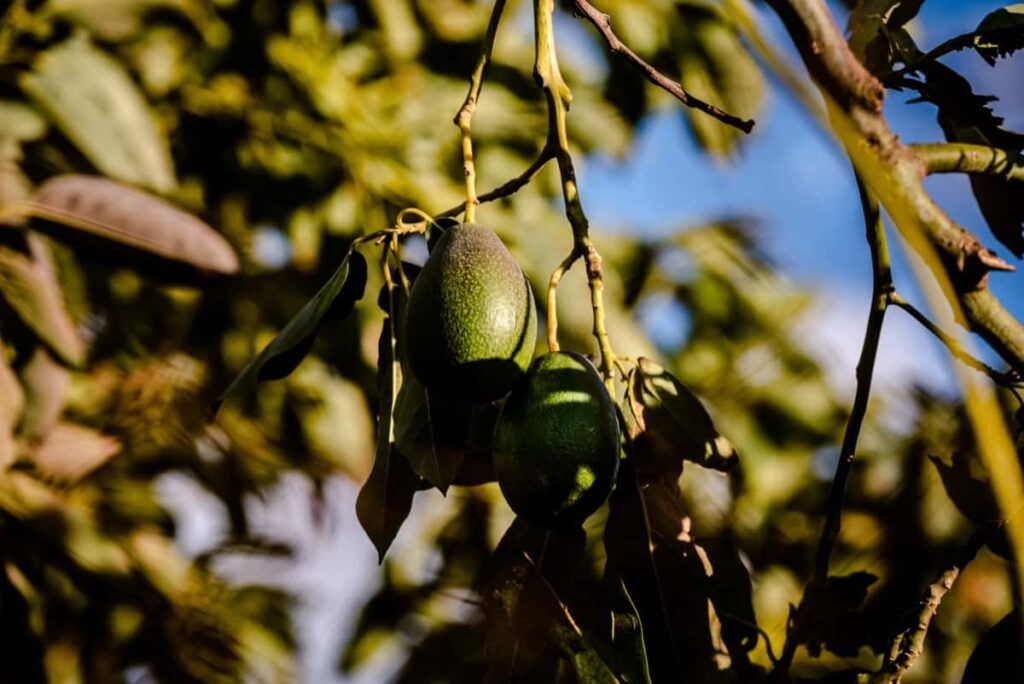
- Soil Analysis: A complete soil analysis, done well before planting, is essential. Lime is added to the soil to increase the soil pH value to 6.5. Dolomitic lime is part-substituted for calcitic lime if magnesium is deficient. Before planting, if the soil is phosphorous is deficient, it should be added along with the lime and mixed thoroughly into the soil. If the soil is too alkaline, adding sulfur may reduce the pH value.
- Propagation: Avocados are typically grown from seeds. Unfortunately, these plants do not produce high-quality fruits grown commercially in other parts of the world. Fruits grown from seeds are often smaller, and plants produce fewer fruits than grafted plants.
- Fertilizers and Pesticide Application: Avocado requires specific soil conditions and nutrients like calcium, zinc, and nitrogen for optimal growth. Water logging can cause root rot, a major problem for avocado, which can be prevented by avoiding water logging and building mounds in flood-prone areas.
Project Report on Avocado Cultivation
Avocado farming can be a highly profitable venture in India. Currently, the amount of avocado imported into the country is much higher than that produced locally. By obtaining high-quality cultivars that can thrive in Indian regions, there is a great opportunity for profitable avocado farming.
- Assuming a price of Rs. 100 per kg for local fruits, High cultivars price ranges from Rs. 150-250.
- The estimated costs of avocado farming for the first year are as follows:
- Rs. 6,000-10,000 for seedlings (at Rs. 150-180 per plant),
- Rs. 20,000-25,000 for land preparation,
- Rs. 35,000 for drip irrigation,
- Rs. 25,000-35,000 for fertilizers, and
- Rs. 25,000 for labor,
- Totaling Rs. 111,000-2,00,000.
- The estimated cost for the 2nd to 4th year is Rs. 50,000-65,000 per year, which includes costs for fertilizers, labor, and other necessary expenses.
- Total Cost of Cultivation Up to 4 years Rs. 2,60,000-4,00,000.
The income from avocado farming begins in the 7th year, with each fruit weighing an average of 250 grams. Assuming a market rate of Rs. 120-200 per kg, which is the minimum rate, 80 trees, each bearing 60 kg of fruit in the seventh year, will generate Rs. 5,76,000 to Rs. 9,60,000 in revenue.
In case you missed it: How to Grow Bok Choy Hydroponically: A Step-by-Step Guide for Planting to Harvesting
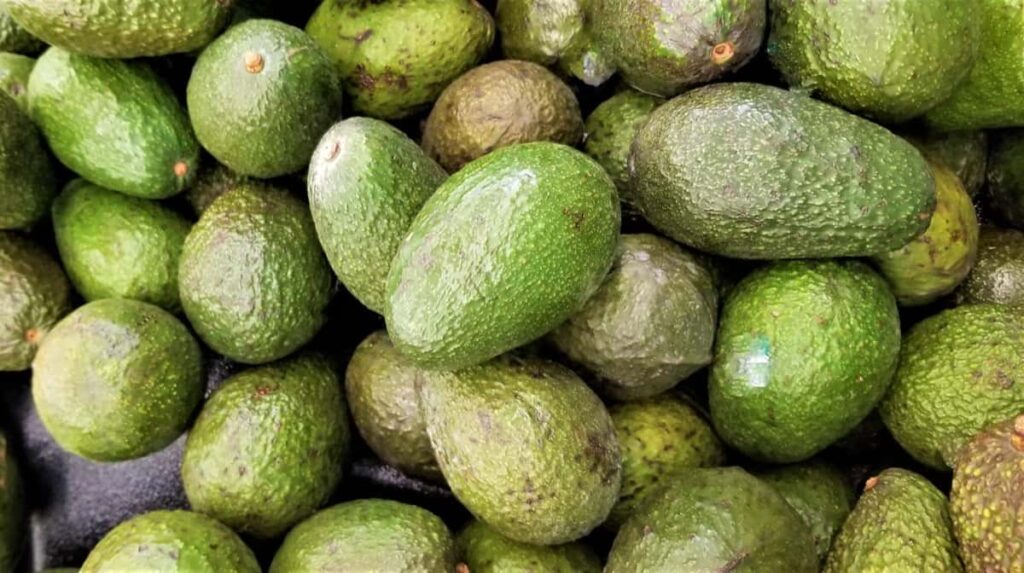
The revenue will increase as the trees mature, with 250 kg of fruit produced by each tree starting from the 11th year onwards and earning Rs. 15,00,000 annually. To generate a profitable avocado farming business plan, focusing on producing high-quality fruits that can be sold for export is essential. Modern techniques, such as drip irrigation, and ensuring the appropriate use of fertilizers can also boost productivity and profitability.
Market Research and Analysis
- The global avocado market size is expected to grow at a CAGR of 4.1% from 2021 to 2028.
- Rising consumer demand for healthier food options is a key driver of the avocado market growth.
- The increasing popularity of avocado-based products such as guacamole and avocado oil also contributes to market growth.
- The Asia Pacific region is expected to witness the fastest growth in demand for avocados due to increasing awareness of avocados and its health benefits.
- The increased emphasis on a healthy lifestyle and the expanding number of customers of healthy food products are driving market expansion.
- Furthermore, rising nutritional awareness, a growing middle-class population, and rising import demand are expected to drive industry growth.
- Advanced markets for processed avocados are expected to drive industry expansion as well.
Avocado Farming Business Plan
Avocado farming has gained popularity as a profitable agribusiness venture in recent times. With the growing demand for avocados in the local and international markets, investing in avocado farming has become a viable opportunity for entrepreneurs and farmers alike. Avocado trees are easy to grow and require less maintenance than other fruits. They also offer numerous health benefits, making them a popular choice for consumers.
Before starting an avocado farming business, it is essential to conduct a SWOT analysis to assess the business’s strengths, weaknesses, opportunities, and threats. A SWOT analysis helps identify the key factors that can impact the business’s success.
Strengths
- High demand for avocados in the local and international markets
- Easy to grow and maintain
- High profitability due to low production costs and high market prices
Weaknesses
- Limited knowledge and expertise in avocado farming practices
- Challenges in obtaining high-quality seedlings and irrigation equipment
- Risks associated with climate change and natural disasters
Opportunities
- Expansion of avocado farming to meet the growing demand
- Development of value-added products such as avocado oil and guacamole
- Export opportunities to international markets
Threats
- Competition from established avocado farming businesses
- Fluctuations in market prices due to changing consumer preferences and economic factors
- Government policies and regulations affect the agriculture industry.
In case you missed it: A Comprehensive Guide to Saffron Farming Business Plan: Maximizing Your Harvest, Successful Saffron Farming Strategies
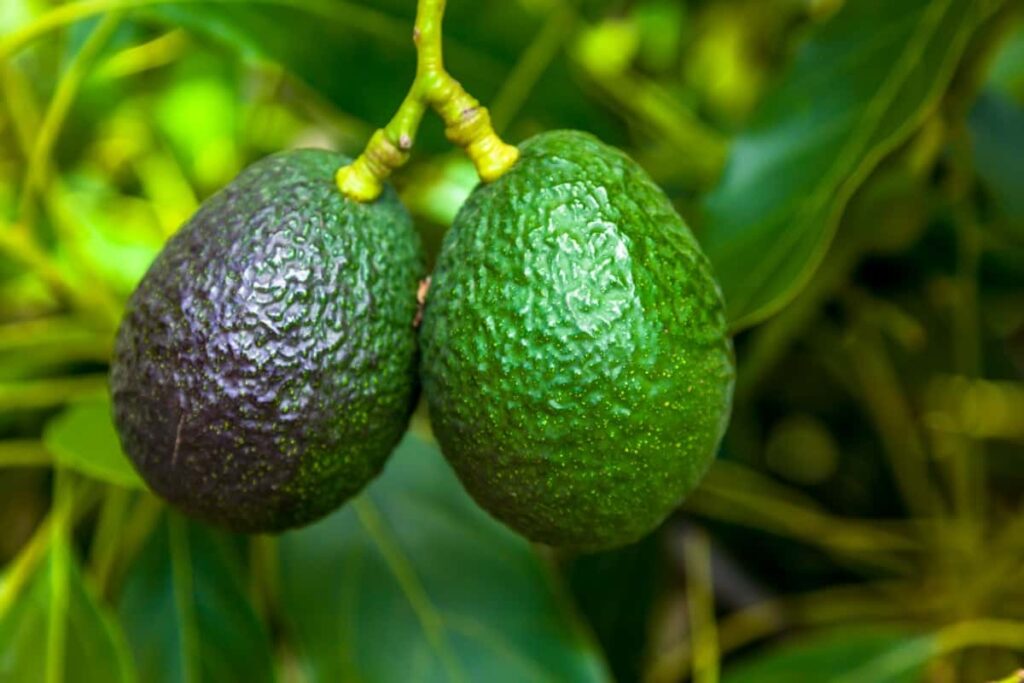
Business Plan Components of Avocado Farming
Avocado farming business plan is essential for entrepreneurs looking to start an avocado farming business. It will help identify and analyze market trends, demand, competition, and financial projections. Here’s an outline of the sections of an avocado farming business plan:
- Executive Summary: The executive summary provides an overview of the business, including the company’s mission, goals, and objectives. It should also highlight the key points of the business plan, such as the target market, marketing strategy, and financial projections.
- Market Analysis: The market analysis should cover the current state of the avocado industry, including trends, demand, and competition. This section should also analyze the target market and identify potential customers.
- Marketing and Sales: The marketing and sales section should outline the strategies the company plans to use to reach its target market. This can include advertising, promotions, public relations, and sales tactics.
- Operations: The operations section should detail the day-to-day operations of the business. This includes the farming process, sourcing materials, and labor requirements.
- Management and Organization: The management and organization section should detail the team’s qualifications and experience. It should also outline the organizational structure of the company.
- Financial Plan: The plan should provide a detailed projection of the company’s financial performance over the next five years. It should include income statements, balance sheets, cash flow statements, and break-even analysis. Additionally, this section should outline the startup costs, funding requirements, and potential revenue streams.
In case you missed it: From Seed to Sale: Creating a Business Plan for Clove Farming and Tips for Starting a Clover Production Business
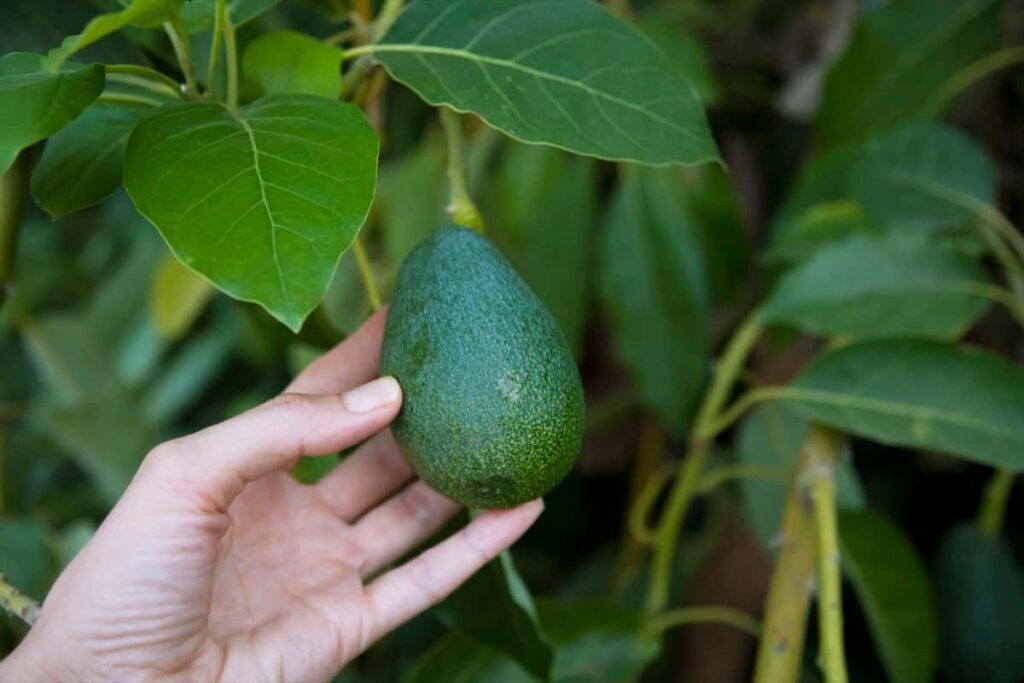
Conclusion
You need a thorough business strategy to start an avocado farm and see it through to financial success. Business owners can improve their chances of success in this profitable field by completing market research, examining the competitors, and creating a comprehensive financial plan.
- Profitable Village Farming Business Ideas in 2024
- High-Yield Aquaculture: Fast-Growing Fish for Farming
- Effective Fish Pond Construction Techniques for Beginners
- Irrigation and Water Management in Pineapple Farming
- Blossom to Harvest: Mastering Flowering and Pollination in Papaya Farming
- Pig Fattening Essentials: From Selection to Sale for Beginners
- Raising Wagyu Cattle: A Complete Guide for Premium Beef Production
- Soil Types and Their Water Holding Capacity
- Optimizing Irrigation Schedules for Coconut Groves for Enhanced Yield
- Espresso Your Garden: Coffee Grounds for Healthier Acid-Loving Plants
- The Best Soil Mix for Snake Plants: How to Mix Your Own Snake Plant Soil
- Green Thumb Success: Expert Tips for Cultivating Greenhouse Beans All Year Round
- Bloom All Year Round: The Ultimate Guide to Indoor Hyacinth Care
- Eco-Friendly Gardening: How to Make Liquid Fertilizer from Kitchen Waste
- Ultimate Guide to Grow Anise in Pots: Explore Seed Propagation to Harvesting
- Guide to Raising Chester White Pigs: Discover Breed Facts to Growth Management
- Mastering the Elegance: The Ultimate Guide to Weeping Cherry Tree Care, Planting, and Maintenance
- Ultimate Guide to Planting Garlic in Grow Bags: Growing Strategies for Beginners
- How to Fix Spider Plant Leaf-Related Problems: Natural and Organic Remedies
- 10 Reasons Why Your Tulsi Plant is Shedding Leaves: Home Remedies and Solutions
- Optimizing Growth and Yield: The Advantages of Palm Bunch Ash Fertilizer
- Utilizing Neem Oil Extract as a Natural Pesticide for Hydrangea
- From Soil to Harvest: Various Ways in Which Farmers Can Use AI Tools
- Steps to Encourage and Induce Citrus Flowers: A Comprehensive Guide
- How to Fix Snake Plant Leaf-Related Issues: Natural and Organic Remedies
- Transform Your Garden into a Fragrant Oasis with Raat Ki Rani (Night Blooming Jasmine)
- Discover the Ideal Chicken Breeds for Philippine Farms
- How to Create a Poultry Egg Farm Business Plan for Profits
- Grow Lemon Cucumbers Like a Pro: Insider Techniques for Bountiful Yields
- Ultimate Guide to Caring for Your Pink Princess Philodendron: Tips for Thriving Variegation
- Areca Nut Profit Per Acre: Calculating Yield and Cost of Cultivation
- How Kaveri Chicken is Becoming a More Profitable Breed in Indian Backyards
- Transform Your Barn: 9 Steps to Convert a Horse Stall into a Chicken Coop
- Exploring Suffolk Sheep Disadvantages with Limitations and Challenges
- Guide to Solving Potted Lemon Tree Problems: How to Revive Lemon Tree in Containers
- Steps to Encourage Female Pumpkin Flowers: Best Strategies for More Flowers and High Yields

Very useful organized step by step information.
Many thanks